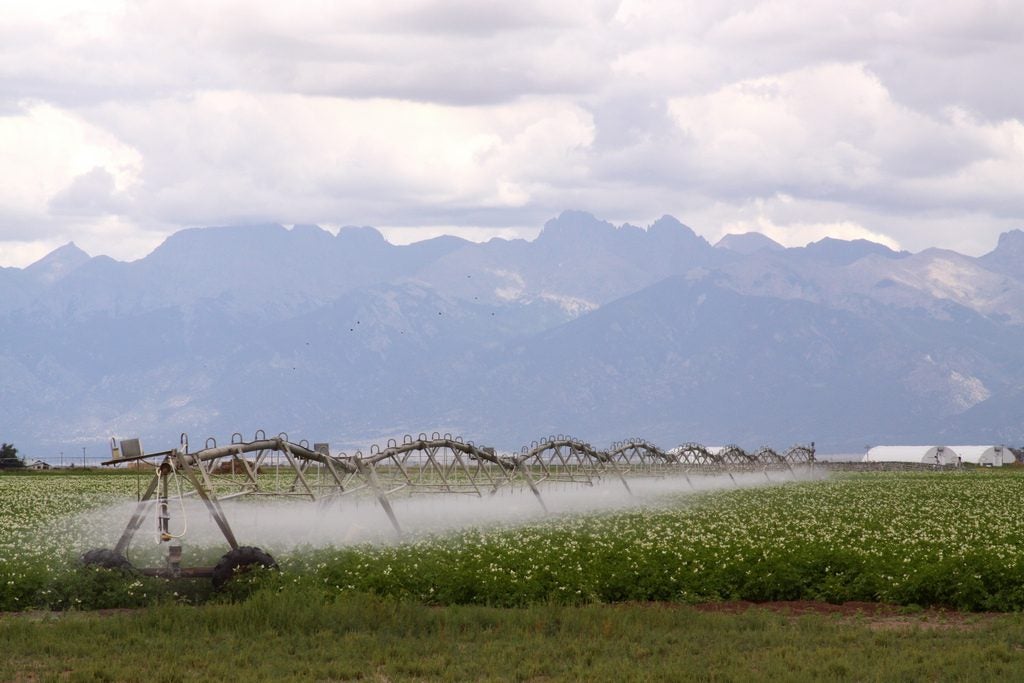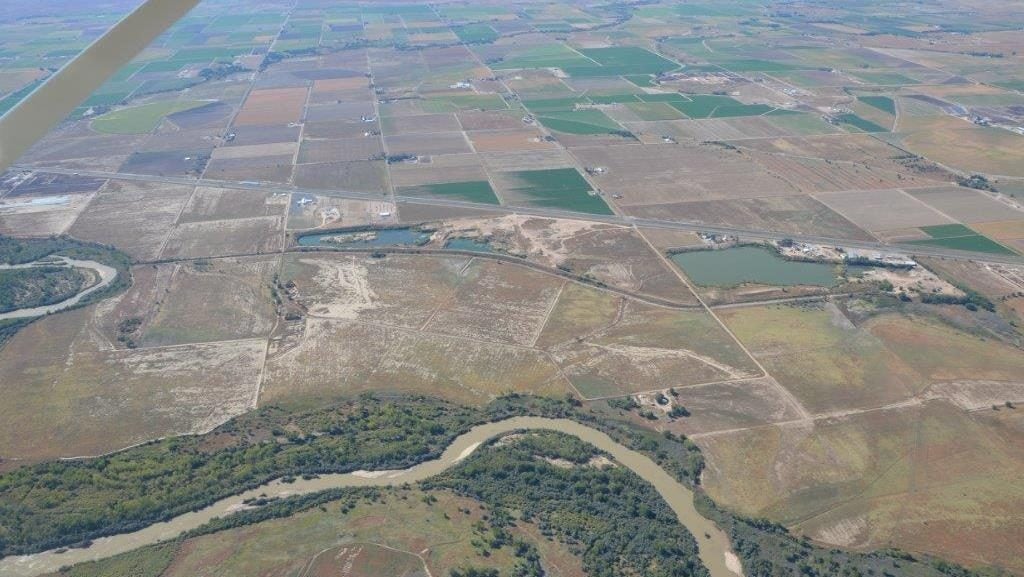Colorado voters will soon choose a new governor. Based on the candidates’ campaign statements and policy proposals, both Republican state Treasurer Walker Stapleton and Democratic U.S. Rep. Jared Polis are committed to implementing Colorado’s Water Plan.
They’re both also receptive to a key element of the plan called Alternative Transfer Mechanisms (ATMs). Here’s why that’s a good thing for Colorado.
Water becomes a new opportunity
Developed in 2015, Colorado’s Water Plan outlines ways to create a secure water future through urban conservation, agricultural innovation and more flexible water management through mechanisms like ATMs.

A self-propelled overhead sprinkler system on a farm in Colorado. (Photo: Kevin Bovard)
ATMs are transactions in which cities can temporarily access agricultural water supplies for one or two years, offering farmers a new revenue stream from water sales. So instead of growing corn or soybeans during that time, it’s as if the farmer is growing water to sell to urban users, still remaining part of the local economy.
Colorado’s Water Plan sets a goal of transferring 50,000 acre feet of water every year from agriculture to cities through ATMs by 2030. Currently, the number is at 12,000 acre feet.
An innovative alternative to “buy and dry”
Another key benefit of ATMs is that they provide an alternative to moving water off farms and ending agriculture production permanently, a practice called “buy and dry.”
Buy and dry in isolation is perfectly fine, involving private transactions and personal property rights. But if enough agricultural production is taken out of the state or a community, it can have serious economic impacts. The practice of buy and dry is projected to take 500,000 to 700,000 acres of agricultural land out of production by 2050, amounting to 20 percent of the state’s irrigated farmland.

Fallowed farmland in Rocky Ford, Colorado shows the landscape impacts of “buy and dry.” Photo credit: David Owen with support from LightHawk.
Four ways the next governor can catalyze ATMs
1. Provide incentives: ATMs can be cost competitive with buy-and-dry agreements (we studied it), but financial incentives could make transactions even more attractive. Incentives don’t have to be just financial, however; there can be reputational benefits as well. For instance, imagine the governor recognizing mayors with an award that declares, “This community supports local agriculture through its water decision.” Sometimes recognition and pride are more powerful than money.
2. Create a water lease clearinghouse: Lack of capacity at water utilities, especially in small communities, is a major barrier to ATMs. When water managers, who are also juggling countless vital tasks for their community, are deciding between “buy and dry” and ATMs, they typically choose the simpler and more familiar “buy and dry” practice. Creation of a water lease exchange or bank that develops the agreements with farmers could take some of the burden off of overburdened water managers.The next Colorado governor has the opportunity to make good on one key water goal. Here’s how: Share on X
3. Increase collaboration, Colorado style: Water transfers from farms to cities start as two-party transactions, but they affect rural businesses and institutions, and river-dependent critters and communities. The new governor should create a blue ribbon panel composed of agricultural producers, municipalities, financial institutions, and environmental and business interests, who would be charged with collaborating to create a path forward for more ATMs.
4. Reduce barriers: A decade’s worth of policy changes has made ATMs possible in famously complex water law. Further barriers can and should be identified and tackled. For example, there are still limits to how many years water can be leased, and water infrastructure or lack of it prevents some transactions.
ATMs provide an opportunity to help Colorado create a more resilient water system in a way that benefits farms, communities, and our rivers and streams.
It’s rare, especially in water, to find a win-win-win scenario, but with some attention and enthusiasm, the next governor could turn that rare opportunity into reality.









